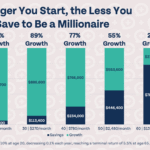It’s Friday at 5:00 PM. The work whistle blows (metaphorically), and the “weekend mode” switch flips in your brain.
For most of us, “weekend mode” is synonymous with “spending mode.”
We order takeout because we are too tired to cook. We meet friends for drinks ($15 cocktails). We wander aimlessly into Target or IKEA “just to look” and walk out with $150 worth of scented candles and throw pillows. We take the kids to the trampoline park ($60). By Sunday night, we look at our bank account and wonder, “How did I spend $300 in 48 hours?”
We have been conditioned to believe that having fun requires swiping a card. We equate spending money with relaxing.
But what if you could have a restorative, exciting, and productive weekend without spending a single penny?

Enter the No-Spend Weekend.
This isn’t about being a hermit. It isn’t about staring at a blank wall for two days. It is a strategic “financial fast”—a challenge designed to break the cycle of mindless consumption, force you to be creative, and keep 100% of your money in your pocket.
In this guide, we will lay out the rules, the preparation, and 50+ ideas to crush a No-Spend Weekend and actually enjoy it.
Part 1: The Rules of Engagement
To make this work, you need clear boundaries. A “No-Spend Weekend” usually runs from Friday at 5:00 PM until Monday morning.
What is Allowed (The “Green Light”)
- Existing Bills: If your Netflix subscription auto-renews on Saturday, that’s fine. We aren’t counting fixed automated bills.
- Groceries (Purchased Beforehand): You are allowed to eat food you already have.
- Fuel (Purchased Beforehand): You can drive your car, but you must start the weekend with a full tank.
- Free Services: Parks, libraries, community events.
- Emergencies: If your child breaks their arm or a pipe bursts, spend the money. That is a crisis, not a failure of the challenge.
What is Banned (The “Red Light”)
- Dining Out / Takeout: Zero. Not even a $2 coffee.
- Shopping: No groceries, no clothes, no online shopping. Stay off Amazon.
- Entertainment: No movie tickets, no cover charges, no paid parking.
- Public Transit/Rideshare: Unless you have a pre-paid monthly pass, avoid Ubers and paid subway rides. Walk or bike instead.
Part 2: The “Why” (The Psychology of the Detox)
Why put yourself through this? Is saving $150 really that life-changing? Yes, but not for the math. For the mindset.
1. Breaking the Dopamine Loop
We are addicted to the “click-buy-ship” dopamine loop. A No-Spend Weekend acts as a dopamine detox. It forces your brain to find satisfaction in creation and connection rather than consumption.
2. Revealing “Leaks”
When you are forced to say “no” to everything for 48 hours, you realize how many mindless micro-transactions you usually make. You realize you buy a coffee every Saturday morning not because you want it, but because it’s a habit. You realize you buy snacks at the gas station just because you are bored.
3. Forced Resourcefulness
Constraint breeds creativity. When you can’t buy entertainment, you have to invent it. When you can’t order pizza, you have to look at the can of beans and bag of rice in your pantry and figure out how to make a meal. This builds confidence.
Part 3: Preparation (The Key to Success)
You cannot wake up Saturday morning with an empty fridge and expect to succeed. You will fail by noon. You must prep on Thursday or Friday.
1. The “Pantry Shop” Do not go out and buy $200 of gourmet groceries to survive the weekend (that defeats the purpose). Instead, shop your own house. Look in the freezer. Look in the back of the pantry.
- Goal: Eat the food that has been sitting there for months. That frozen lasagna? Eat it. The box of pasta? Eat it.
2. Fill the Tank Fill your gas tank on Friday on your way home from work. This removes the temptation to go into the gas station convenience store for a soda.
3. Unsubscribe / Delete Apps If you are addicted to online shopping, delete the Amazon and Instagram apps from your phone for the weekend. If you get a marketing email on Saturday morning about a “Flash Sale,” you might cave. Remove the trigger.
4. Tell Your People If your friends ask you to brunch and you say “I can’t, I’m broke,” you look sad. If you say, “I’m doing a ‘No-Spend Challenge’ this weekend to test my willpower,” you look disciplined. Frame it as a game. They might even want to join you.
Part 4: The Activity Menu (How to Not Be Bored)
The biggest fear is boredom. Here are 5 categories of activities that cost $0.
Category A: The Great Outdoors
Nature is the ultimate free luxury.
- Hiking: Find a local trail you’ve never been to. Pack a lunch and plenty of water.
- Urban Exploration: Be a tourist in your own city. Walk around the historic district. Read the plaques. Look at the architecture.
- The “Golden Hour” Photo Walk: Take your phone or camera and go out specifically at sunset. Challenge yourself to take 10 artistic photos of your neighborhood.
- Community Parks: Frisbee, soccer, or just lying on a blanket reading a book.
- Foraging (Advanced): If you know what you are doing (or have a guidebook), look for blackberries, wild garlic, or mushrooms.
Category B: Indoor Cozy Vibes
If it’s raining, you can still have a great time. 6. The Movie Marathon: You likely already pay for Netflix, Hulu, or Disney+. Pick a franchise (Harry Potter, Lord of the Rings, Marvel) and watch three movies back-to-back. Make your own popcorn on the stove. 7. Spa Day: You probably have face masks, nail polish, and bath salts in your bathroom drawer that you’ve never used. Light some candles, put on relaxing music, and use them. 8. Reading: Tackle your “To Be Read” pile. If you don’t own books, use the Libby app to download free e-books or audiobooks from your library instantly. 9. Board Game Tournament: Dust off Monopoly, Scrabble, or a deck of cards. Play for “high stakes” (loser has to do the dishes).
Category C: Productive & Organized
Use the weekend to improve your life. 10. The Great Declutter: Pick one room (or just the closet). Pull everything out. Make “Keep,” “Donate,” and “Trash” piles. (Bonus: You can sell the “Donate” pile next week for profit!). 11. Deep Clean: Scrub the grout in the shower. Clean the oven. Wash the windows. It costs nothing but elbow grease, and you will feel amazing on Monday. 12. Meal Prep: Cook a giant batch of soup or chili using whatever is in the pantry to freeze for next week’s lunches. 13. Digital Cleanup: Organize your phone photos into albums. Delete 1,000 screenshots you don’t need. Backup your computer.
Category D: Learning & Skill Building
- YouTube University: Want to learn to knit? Code python? Do yoga? There is a free tutorial for everything.
- Learn a Language: Download Duolingo (free version) and spend an hour binge-learning Spanish or French.
- Writing: Start that blog. Journal. Write a letter to your grandma (you surely have a stamp in a drawer somewhere).
Category E: Social (Yes, you can see people)
- Potluck Dinner: Invite friends over. Tell them: “I’m providing the pasta and space; you bring the drinks and sides.”
- Volunteer: Spending time helping others is the best way to stop thinking about what you “need.” Walk dogs at a shelter or pick up trash in a local park.
- Exercise Partner: Meet a friend for a run or a bike ride instead of coffee.
Part 5: Managing the “Kids” Factor
If you have children, a No-Spend Weekend can sound like a nightmare. Kids are expensive. Here is how to handle the “I’m bored!” complaints for free.
- The “Camping” Living Room: Build a massive fort out of blankets and pillows. allow them to sleep in it on Saturday night. Flashlights required.
- Baking Challenge: “Iron Chef: Toddler Edition.” Give them random ingredients (flour, water, food coloring) and let them make “dough” (playdough).
- Library Visit: The library is the last bastion of free indoor public space. Let them pick out 10 books each.
- Treasure Hunt: Write clues on slips of paper and hide them around the house/yard. The “Treasure” at the end can be a special privilege (like picking the movie for movie night).
- Craft Bin: Dump out all the crayons, glue, and cardboard boxes you have. Tell them to build a robot.
Part 6: The “Danger Zones” (When You Want to Quit)
There will be moments of weakness. Usually:
- Saturday Night: When you see Instagram stories of friends out at bars.
- Sunday Afternoon: When the “Sunday Scaries” hit and you want to “treat yourself” to comfort food.
The Solution: Keep a “Wants List.” Every time you have the urge to buy something (even a candy bar), write it down on a piece of paper along with the price.
- “Starbucks Coffee – $6”
- “New Video Game – $60”
- “Pizza – $25”
At the end of the weekend, add it up. Look at the total. Say: “I just saved $91.” Transfer that exact amount of money from your Checking Account to your Savings Account (or Debt Payment). Make the savings tangible.
Part 7: Variations of the Challenge
Once you master the standard No-Spend Weekend, try these advanced levels:
- The No-Spend Week: Mon-Sun. This requires serious meal prepping.
- The “Pantry Challenge” Month: You can spend money on bills and fresh produce (milk/fruit), but you cannot buy any dry goods or meat until your freezer/pantry is empty.
- The “Cash Only” Weekend: If going cold turkey is too hard, give yourself a $20 bill on Friday. That is your budget for the entire weekend. If you spend it on Friday night, you are done until Monday.
Conclusion
A No-Spend Weekend is a reset button for your life.
It reminds you that you don’t need to spend money to laugh. You don’t need to spend money to relax. You don’t need to spend money to connect with people you love.
The best things in life really are free—but sometimes we are too busy buying the expensive things to notice.
Your assignment: Mark your calendar. Next weekend is the weekend. Check your pantry, fill your gas tank, and warn your family. You are about to get richer.


















